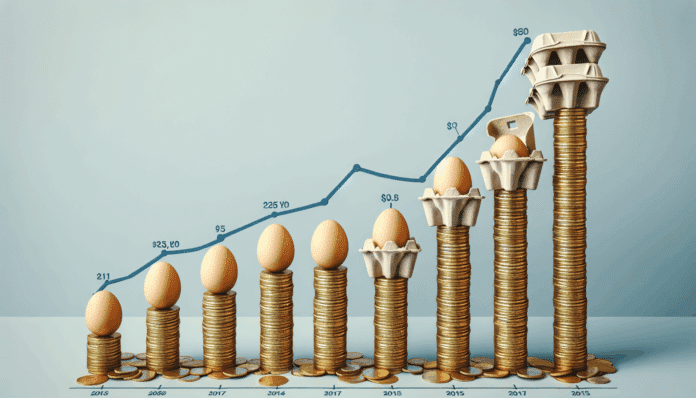The egg market in the European Union is experiencing a notable rise in prices, according to the latest data collected. In March 2025, the average cost of eggs in the EU registered an increase of 6.7% compared with the same period of the previous year, marking a trend that highlights the current fluctuations in food prices. These fluctuations have been a hot topic in recent economic debates, signaling the underlying pressures in the food market.
Among the EU member states, Czechia stood out by recording the most pronounced price increase, with 46% more in March 2025 compared with the previous year. They were followed by Slovakia with an increase of 29.8% and Hungary with 26.1%. In a contrasting panorama, the Netherlands, Luxembourg, and Greece experienced a decline in egg prices, with respective reductions of 3.6%, 3.2%, and 2.0%.
The start of the year 2025 already showed signs of this bullish trend. There was a 3.4% increase in January and a 4.1% increase in February, revealing a clear recovery in prices after the declines observed in 2024, when 10 of the 12 months experienced negative rates compared with 2023. These contrasts are more evident if the years 2022 and 2023 are considered, marked by constant double-digit increases. The peak was reached in February 2023 with an increase of 31.2% compared to the same month of the previous year.
These data underscore the complexity and dynamism of the European food market, which is subject to various pressures that influence the different countries unequally. For those interested in delving deeper into the analysis of fluctuations in food prices, Eurostat provides a comprehensive price monitoring tool. This platform allows exploring the evolution of egg prices and other food products over time.
The tool provides a detailed view of price indices for various agricultural products, including producer prices, import prices, and consumer prices. Thus, it provides a comprehensive understanding of how costs are transferred across the different stages of the food supply chain. Additionally, the platform is regularly updated with new data, ensuring that users have access to the most up-to-date information on the evolution of food prices across the EU.



